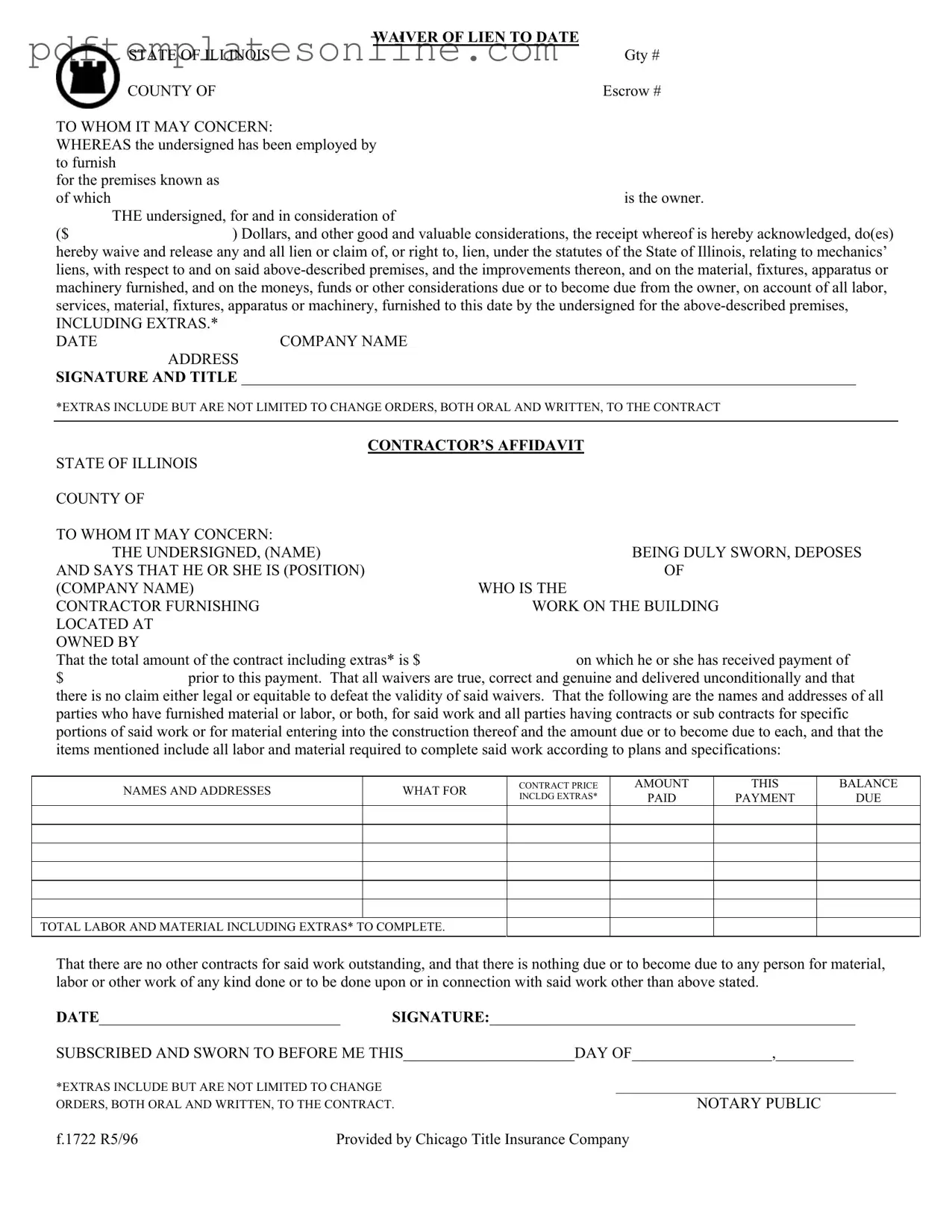When completing the Chicago Title Waiver Format form, individuals often make several common mistakes that can lead to complications down the line. One frequent error is failing to accurately fill in the company name. This detail is crucial, as it identifies the party waiving their lien rights. Omitting or misspelling the name can create confusion and potentially invalidate the waiver.
Another common oversight involves neglecting to specify the date correctly. The date is not merely a formality; it establishes the timeline for the waiver and can affect the enforceability of the lien rights. If the date is left blank or incorrectly filled in, it may lead to disputes regarding when the waiver was executed, complicating matters for all parties involved.
People also often forget to include the contract amount. This figure is essential, as it provides clarity on the financial aspects of the agreement. Leaving this section incomplete can lead to misunderstandings about what is owed and could potentially result in legal challenges regarding payment obligations.
Another mistake is the failure to list all parties involved in the project. The form requires the names and addresses of all individuals or entities that have provided labor or materials. Omitting any of these parties can leave gaps in the waiver, which may expose the undersigned to future claims. It is vital to ensure that every contributor is accounted for to maintain the integrity of the waiver.
Individuals may also overlook the importance of signing the document in the correct place. A signature at the bottom is not sufficient if it does not correspond with the required acknowledgment sections. Ensuring that the signature is placed where indicated not only demonstrates compliance but also reinforces the validity of the waiver.
Lastly, some may underestimate the significance of having the waiver notarized. A notarized document adds an extra layer of authenticity and can be critical in legal contexts. Skipping this step may render the waiver less credible, leaving the undersigned vulnerable to future claims. Each of these mistakes can have serious ramifications, making careful attention to detail essential when filling out the Chicago Title Waiver Format form.
